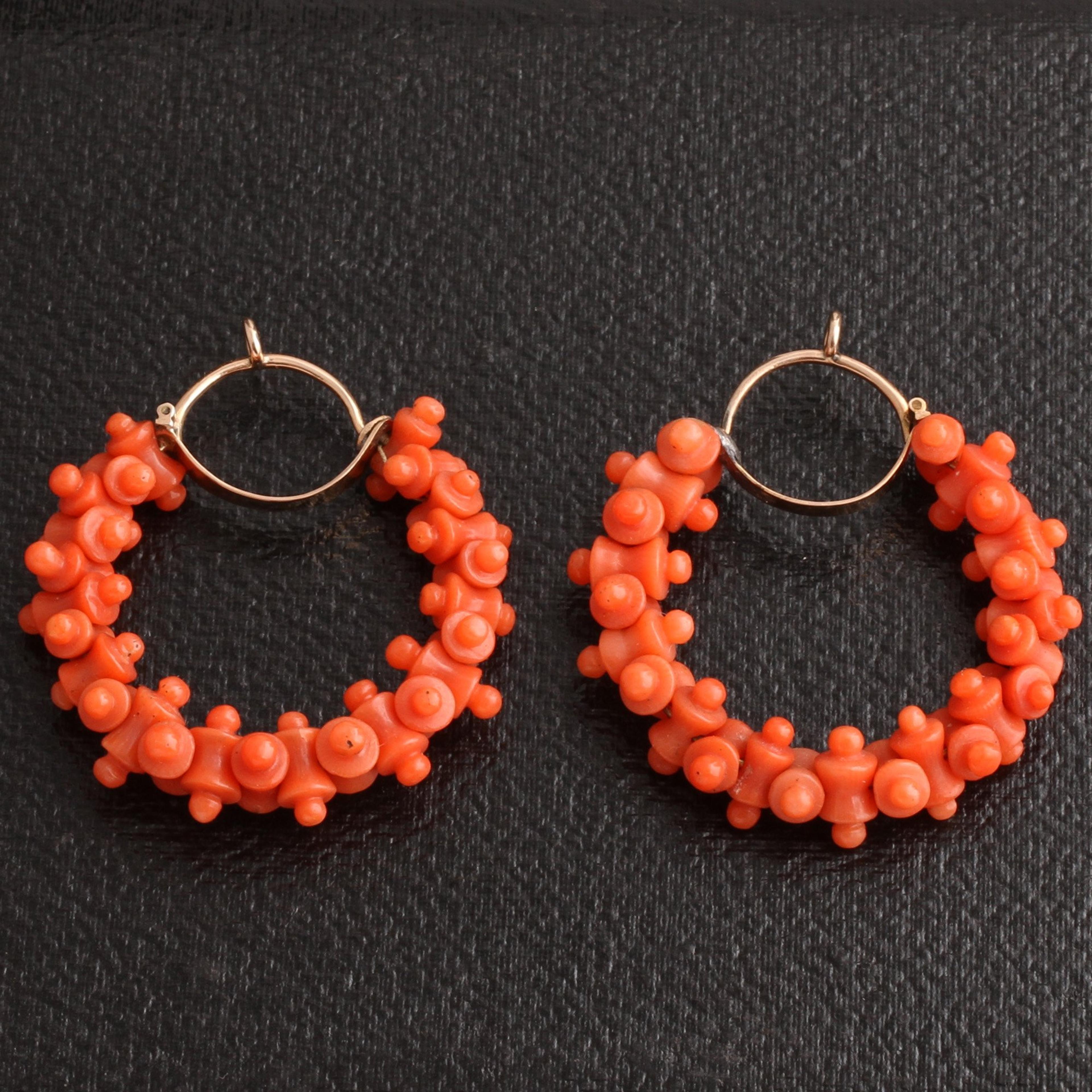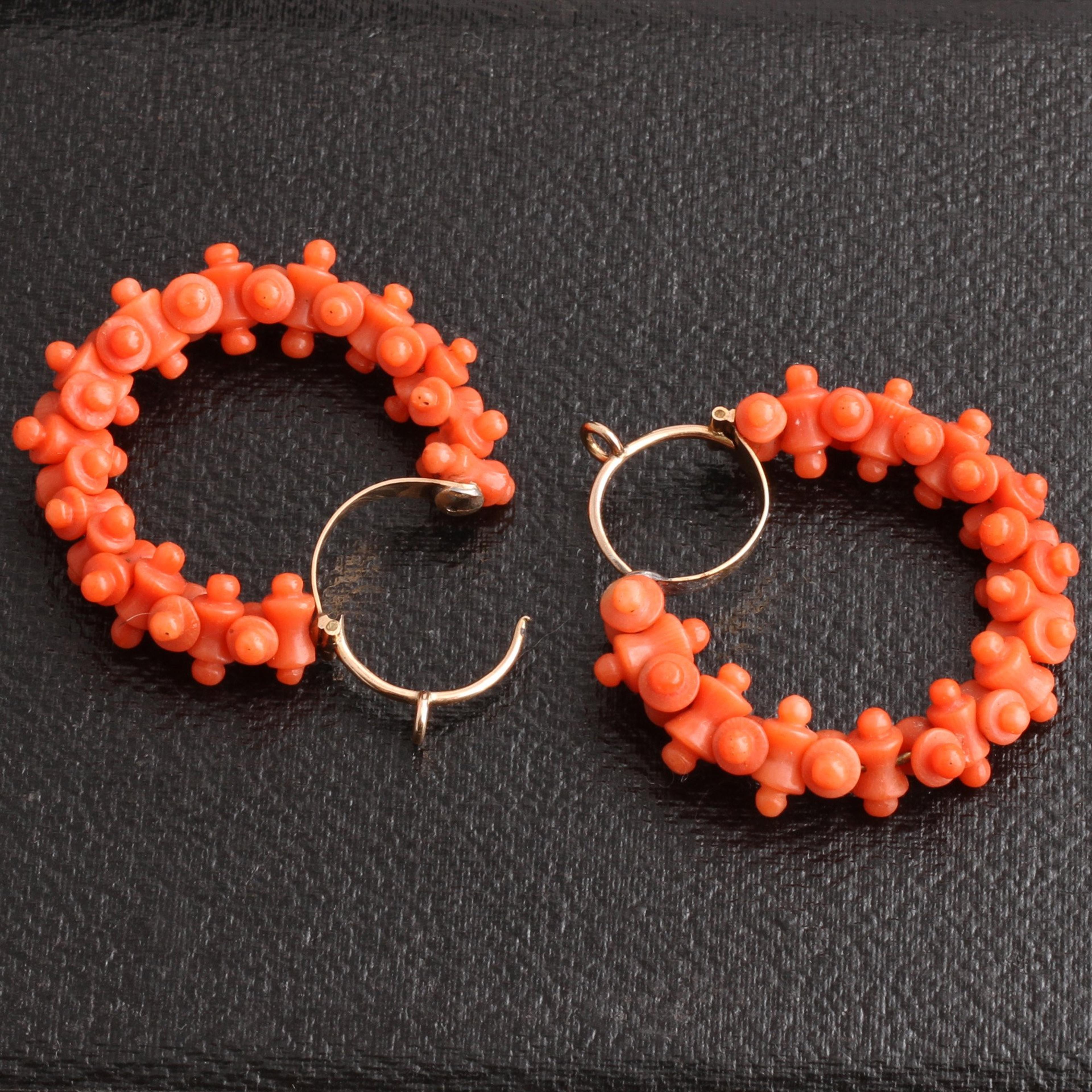The Grand Tour was an essential undertaking for any English man of means beginning in the 1700s, but it wasn't until the early 1800s with the invention of steam-powered transportation that it became a pursuit open to anyone, including women. The tour typically began in Dover, England and culminated in Italy. Throughout the tour one was supposed to acquire knowledge of language, politics, sport and art and become a generally more well-rounded person of privilege. And on the way, they shopped for souvenirs, often in jewelry form. These outstanding Georgian era hoop earrings feature elaborate carved coral beads strung together and affixed to back to front gold ear wires complete with wig hooks. The style and material of these earrings are clues that tell us that, most likely, these earrings were a souvenir purchased on someone's Italian leg of the Grand Tour in the early 1800s.
thedetails
- Materials
14k gold (tests), coral.
- Age
c. 1800
- Condition
Very good - visible repair to one ear wire.
- Size
1.5" from top of the wire to base of the hoop, 1 3/8" width.
Need more photos?
Send us an email to request photos of this piece on a model.

Aboutthe
GeorgianEra
1714 — 1837
As imperialist war raged in the Americas, Caribbean, Australia, and beyond, the jewelry industry benefited: colored gems from all over the empire became newly available. A mix of artistic influences from around Europe contributed to the feminine, glittering jewels of the era. Dense, ornate Baroque motifs from Italy showed up in Georgian jewelry, as did French Rococo’s undulating flora and fauna. Neoclassical style made use of Greek and Roman motifs, which were newly popular due to the recently uncovered ruins of Pompeii and Herculaneum. Lapidary methods improved: the dome-shaped rose cut was popular, as was the “old mine cut,” a very early iteration of today’s round brilliant cut.
The boat-shaped marquise diamond cut was developed around this time, supposedly to imitate the smile of Louis XV’s mistress, the marquise de Pompadour. Paste — an imitation gemstone made from leaded glass — was newly developed in the 18th century, and set into jewelry with the same creativity and care as its more precious counterparts. Real and imitation gems were almost always set in closed-backed settings, lined on the underside with thin sheets of foil to enhance the color of the stone and highlight it's sparkle. This makes Georgian rings tough for modern women to wear, especially on an everyday basis: genteel, jewelry-owning ladies of the 18th century were not famous for working with their hands like we are. Nor did they wash their hands as much as we do. Water will virtually ruin a foiled setting, so take special care with your Georgian ring. Very little jewelry from this period is still in circulation, and it's very difficult to repair.





